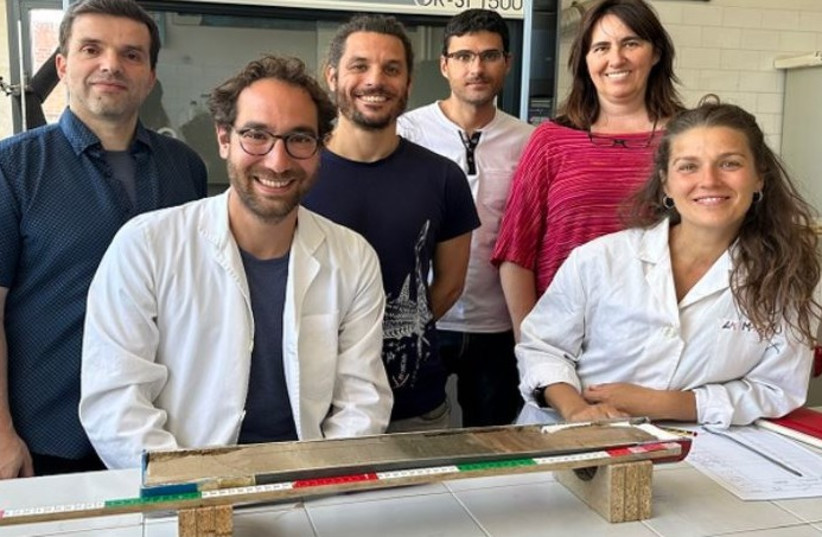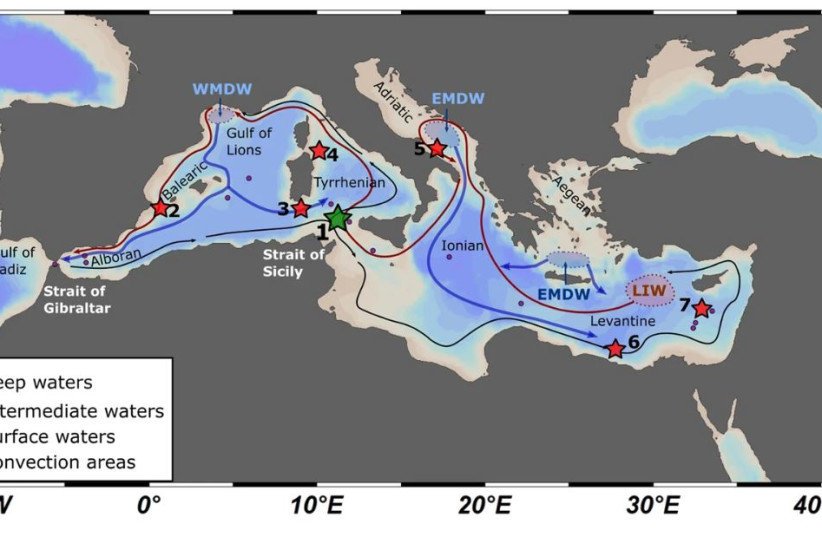Increased salt input from the Mediterranean during the Younger Dryas was key to reactivating the Atlantic circulation that led to rapid warming in Europe.
By JUDY SIEGEL-ITZKOVICH. MAY 17, 2023

(photo credit: University of Barcelona)
Little has been known until now about the impact climate change will have on water circulation in the Mediterranean Sea. Spanish researchers have just published a study on the subject in the prestigious Nature Communications Earth & Environment journal.
During the Younger Dryas (2,580,000 to 11,700 years BP), the flow of water masses from the eastern Mediterranean to the Atlantic Ocean through the Strait of Gibraltar doubled. Researchers applied the innovative technique of neodymium (Nd) isotopes to reconstruct the conditions in the Mediterranean since the last deglaciation some 14,000 years ago.
Part of the doctoral thesis being carried out by Sergio Trias-Navarro, under the supervision of Prof. Leopoldo Pena and Prof. Isabel Cacho, was entitled “Eastern Mediterranean water outflow during the Younger Dryas was twice that of the present day.”
Salt input from the Mediterranean to the Atlantic led to rapid warming in Europe
The Younger Dryas was the most intense climate change of the last 13,000 years and the most far-reaching on a planetary scale. Its end marked the end of the Holocene interglacial period. “There was also climate variability during the Holocene, such as the episodes known as the Little Ice Age, the Medieval Climatic Anomaly, or the Roman Warm Period. However, this climate variability had a lower relative intensity with different regional climatic expressions, without the capacity to generate changes on a global scale,” said Cacho, an expert on earth and ocean dynamics.
The new study supports the hypothesis that increased salt input from the Mediterranean into Atlantic waters during the Younger Dryas was key to reactivating the North Atlantic circulation that led to rapid warming in Europe and the Mediterranean and marked the beginning of the Holocene.
Model of water outflow from the Mediterranean to the Atlantic Ocean 13,000 years ago (credit: University of Barcelona)
“Mediterranean water masses are one of the primary sources of salt in the North Atlantic. Water salinity is an important factor in oceanography, as it determines the density of water masses. It is, therefore, a key process in the formation of deep waters in the Atlantic Ocean and is the driver of global ocean circulation,” noted Trias-Navarro.
There are still many enigmas about the potential impact of Mediterranean waters on the North Atlantic circulation. Despite the scientific interest, “much of the oceanographic studies focusing on the Atlantic Ocean don’t consider the Mediterranean, and perhaps the role of Mediterranean waters in the Atlantic circulation has been downplayed,” the authors said.
The latest report of the Intergovernmental Panel on Climate Change presents the Younger Dryas as an example of the predictable changes in rainfall that will take place in the Mediterranean today as a consequence of an expected reduction in the circulation of the North Atlantic. “On the other hand, according to projections for the end of the 21st century, the Mediterranean circulation will weaken and, consequently, so will its contribution to the Atlantic Ocean,” Cacho predicted. In the current context of climate change, studies such as this one are increasingly necessary to better understand the sensitivity of the Mediterranean circulation to different climatic situations, she said.
“The Younger Dryas is not a perfect analogy for future changes, as we are currently facing a much more amplified greenhouse effect,” the team concluded. “Still, our study reveals that the change in aridity expected by the end of the century is capable of inducing an intensification of the Mediterranean circulation, although the projected warming could counteract this effect. For this reason, we need to better understand the relative weight that these two variables – temperature and humidity – have had on the evolution of the Mediterranean circulation.”

